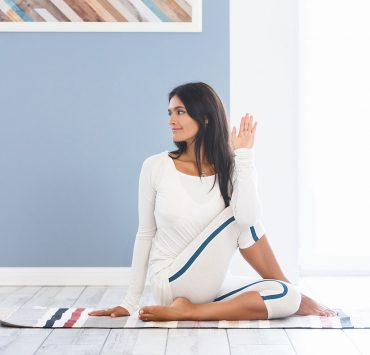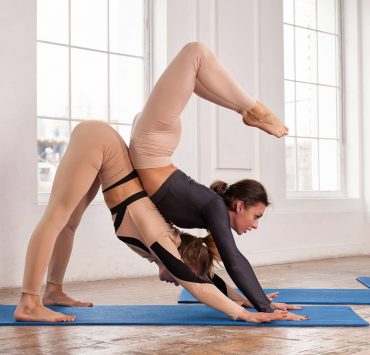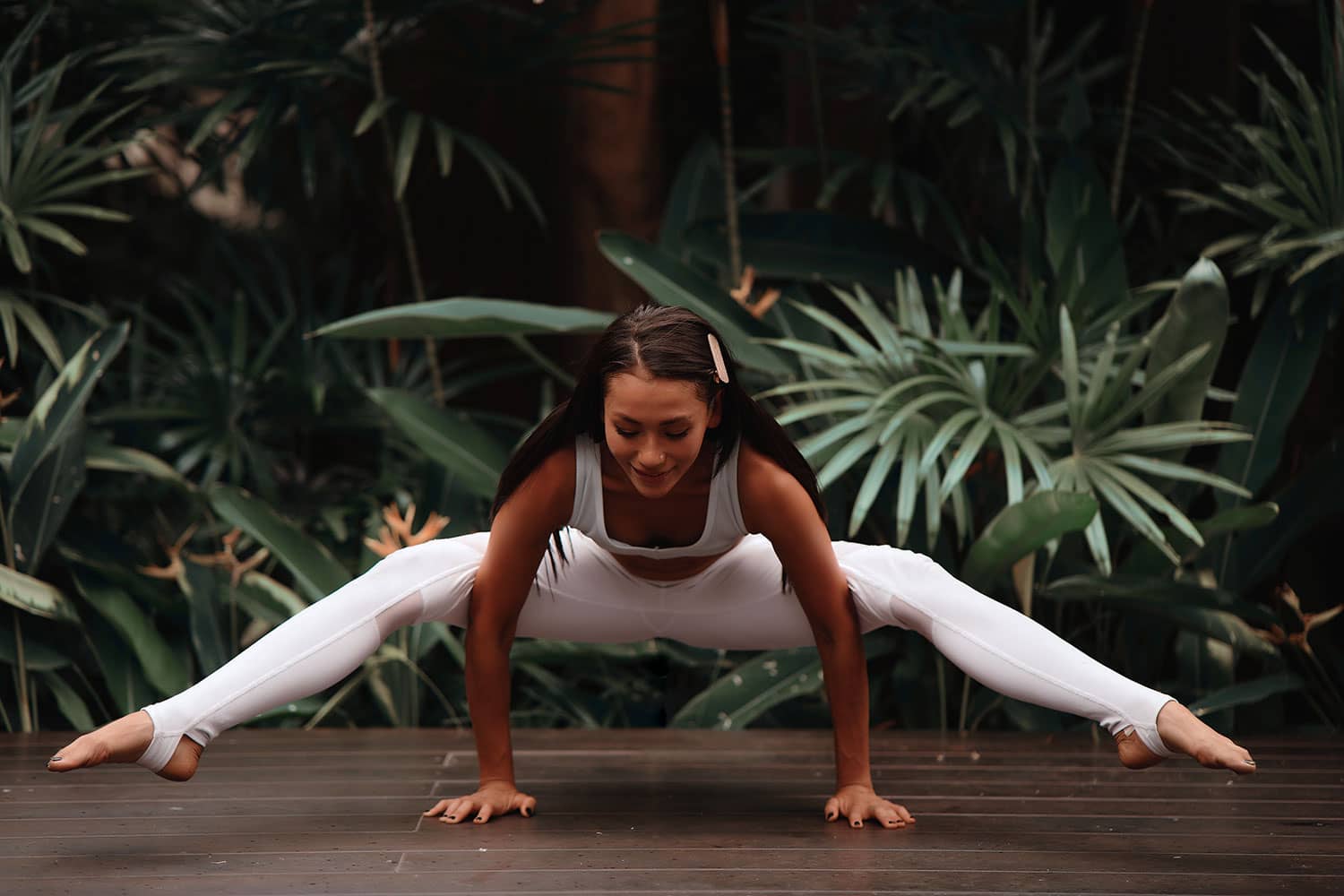
As a trained yoga professional and Ayurvedic practitioner, Donna goes…
If you’re not used to heavy lifting on a regular basis, your upper limbs and arms might not be as strong as you’d like them to be. Luckily, Yoga Arm Balances provide a great way to train your upper body strength through a variety of poses that range from beginner to intermediate to expert levels.
Developing your arm strength might be something you’ve been thinking about for a long time but haven’t quite gotten around to.
If that’s the case, that’s totally okay. But it’s important to remember that arm balances are a process of development. They are not something to jump into right away.
Because of this, we have constructed a list of Arm Balances that starts at the beginner’s level and gradually makes its way to more advanced postures. As you find yourself more comfortable, feel free to explore your body in new ways and discover strength where you might not have expected it.
Ultimately, arm balances are meant to provide insight into your practice and challenge your body to reposition its perspective. The benefits of arm balances in yoga are more than just physical. Many of these postures will include mental and emotional benefits that can be derived from these positions.
In this way, arm balances should be attempted with a holistic mindset and understanding, allowing yourself to explore these positions without feeling discouraged if you don’t get it on the first try.
Our bodies are trying new things and we must honor the ways in which we receive these messages that require assistance or modification.
Be sure to honor your body as you would in any practice.
Before we get into the complete list of Yoga Arm Balances, let’s go over some tips for maintaining safety and providing modifications for these postures.
Tips for Arm Balance Poses
Use a rolled up, soft towel to place between your shoulders blades for better support when doing inverted arm balance poses such as Bridge Pose.
Spread your fingers apart in a star shape and dig your fingertips into the mat for better grip and alignment throughout your practice.
Pay attention to your gaze in these poses so as not to strain your neck and shoulders.
If you can, record a video of yourself in the pose and assess your alignment and form afterwards as opposed to looking in the mirror to check your position.
Restorative poses for upward extensions include poses with a rounded back like Child’s Pose.
For inversion poses, restore your body with straight spine poses like Corpse Pose or Crocodile Pose.
Arm, Elbow, and Palm Safety
Always do arm balance poses on a yoga mat or soft, cushiony area to protect the palms of your hands and elbows.
Never go in or out of these poses too quickly. Your movement should be gradual and you should always listen to your body to prevent straining or tearing a muscle.
Warm up your body by twisting your wrists, swinging your arms at the sides of your body, or stretching and twisting out your side body.
Do not forget the restorative poses. They allow the muscles to relax and come back into their initial condition.
Now that we’ve gone over our safety tips and modification recommendations, let’s start with some Beginner Arm Balance Poses.
Makarasana – Crocodile Pose

- Centers an anxious and depressed mind
- Restores energy and rejuvenates the body physically
- Good for flat feet
Adho Mukha Svanasana – Downward Facing Dog
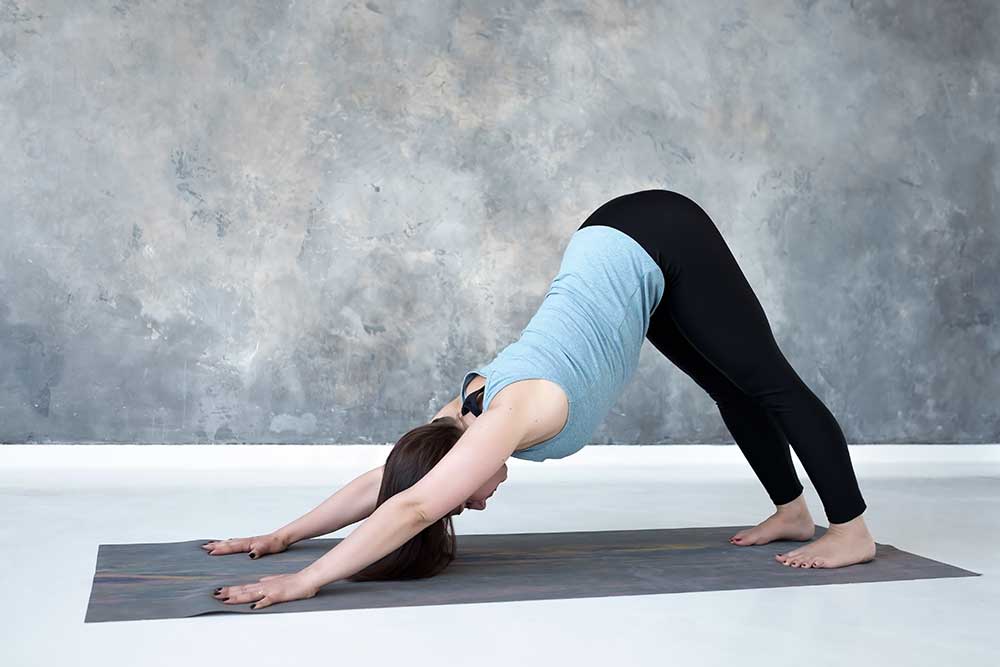
- Greatly enhances your hamstring flexibility and hip flexion
- Stretches your Achilles’ tendons
- Strengthens your wrists, ankles, toes and back
Chaturanga Dandasana – Four Limbed Staff Pose
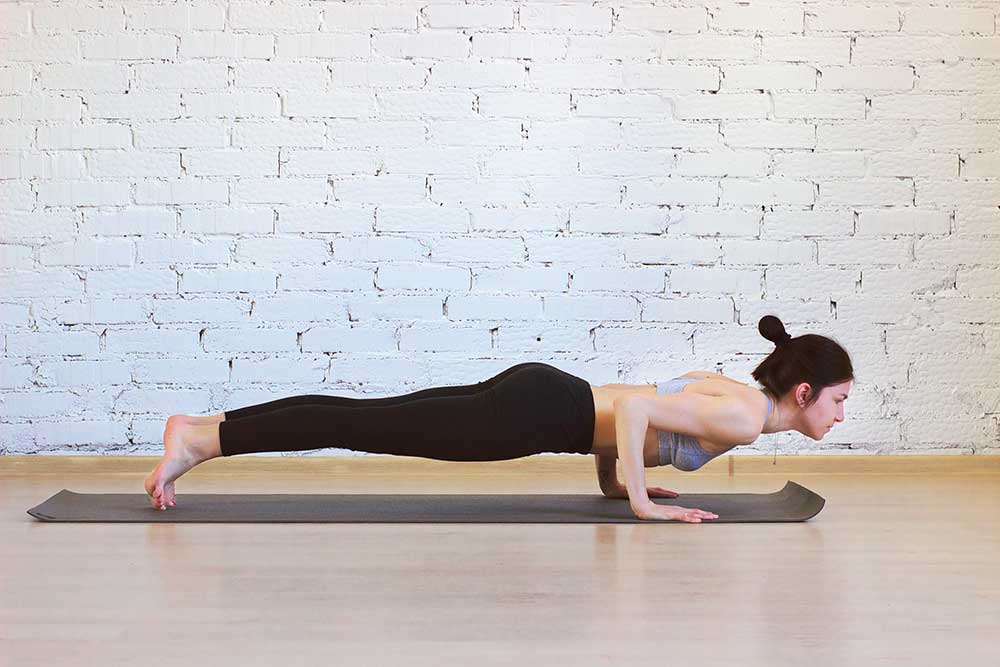
- Strengthens your toes and fingers
- Tones your upper back, hips, and chest
- Works on your balance and arm strength
Ardha Bhekasana – Half Frog Pose
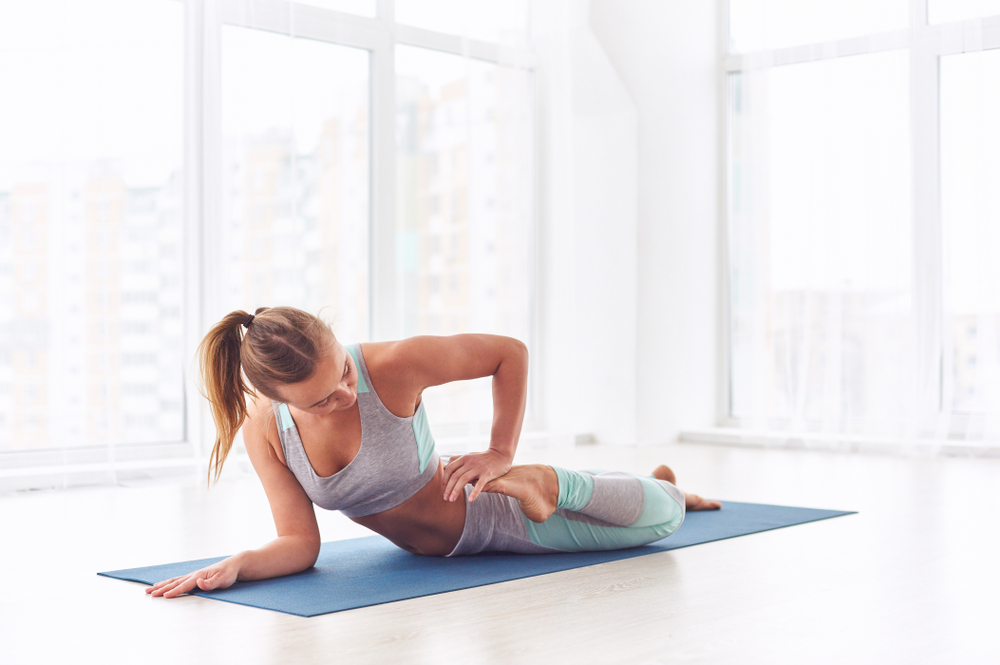
- Stretches your abdomen and quadriceps
- Strengthens your arms and shoulders
- Provides relief for back pain
Ardha Chandrasana – Half Moon Pose
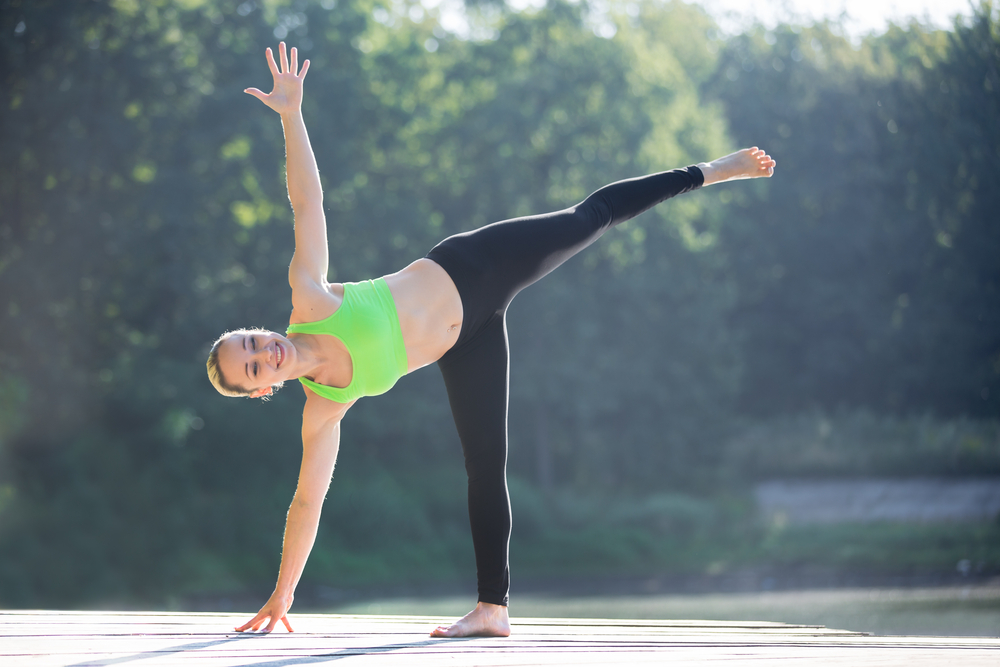
- Aids in fat loss
- Greatly increases your sense of balance and mental focus
- Stretches your thighs and ankles
Ashva Sanchalanasana – Lunge Pose
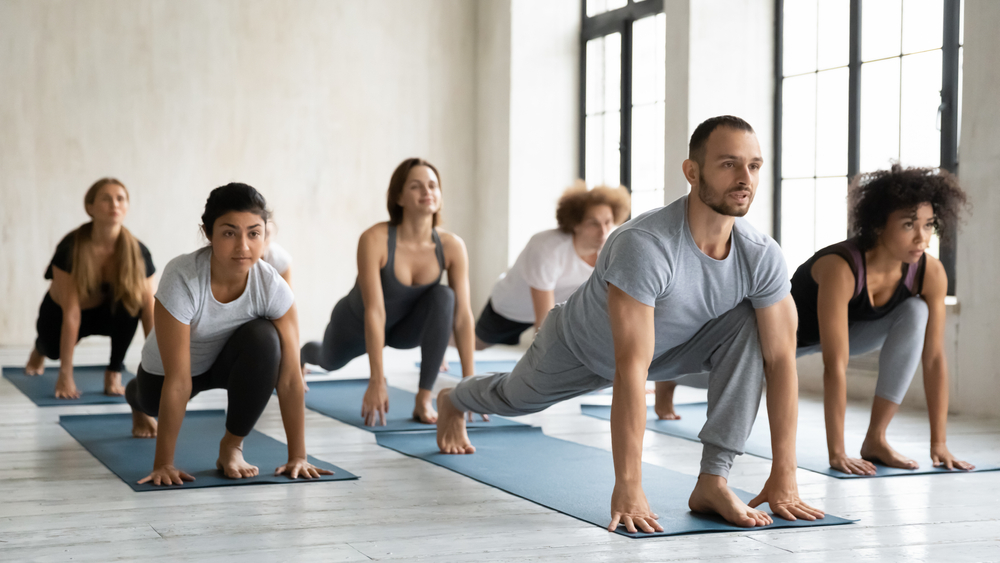
- Good posture for flat feet and mental stress
- Strengthens your Achilles’ tendon, hamstrings, and fingers
- Deeply stretches your back and legs
Salamba Bhujangasana – Sphinx Pose
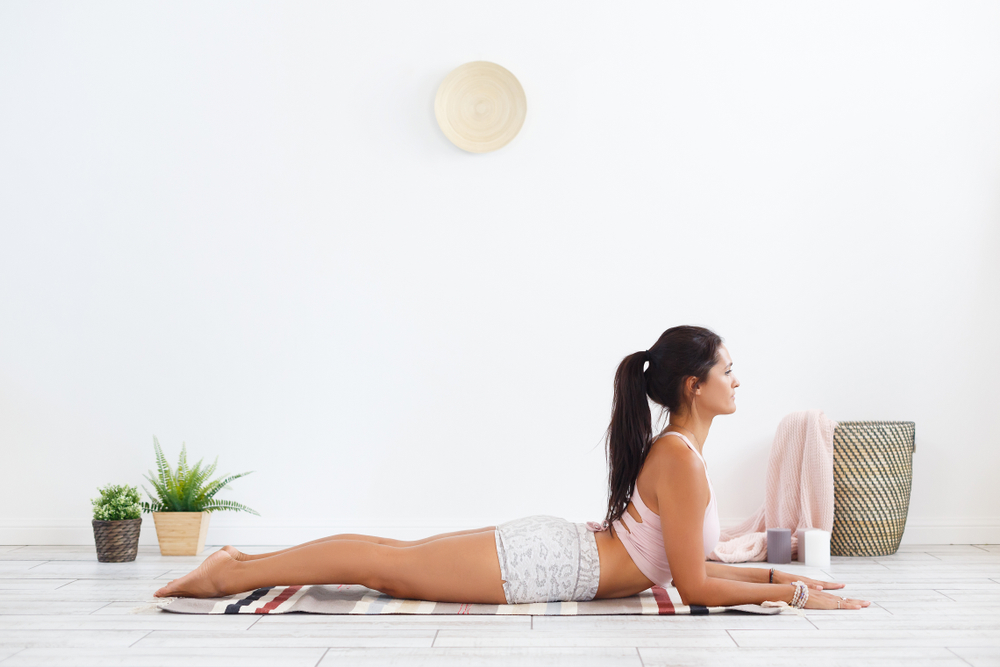
- Strengthens your arms and shoulders
- Tones your lower back and hips
- Good posture for digestive issues
Kumbhakasana – Plank Pose
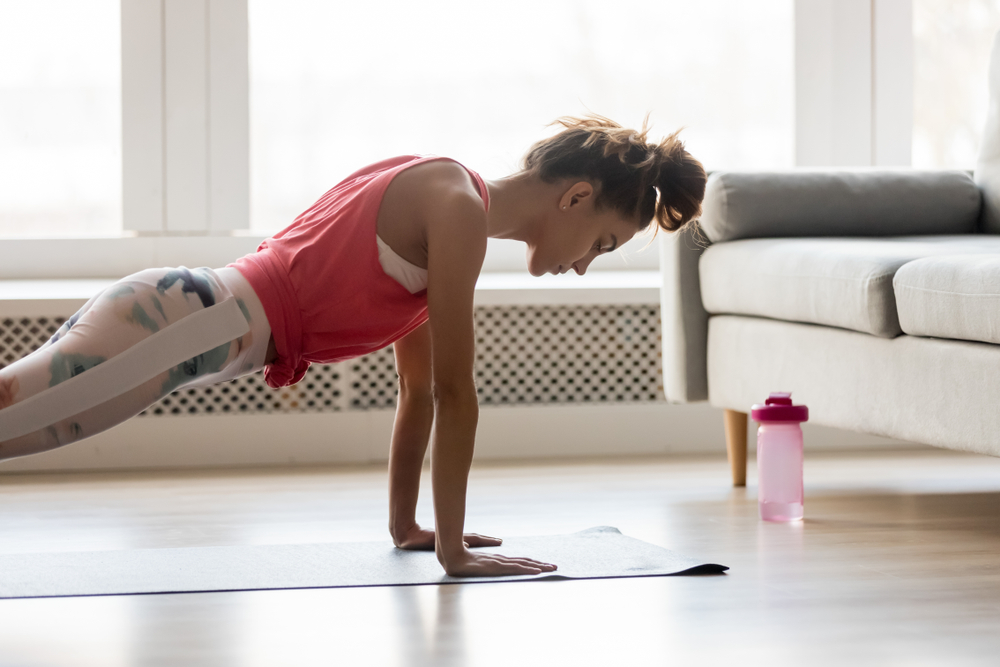
- Strengthens your arms, wrists, and spine
- Tones your abdomen and core
- Stretches your hamstrings and ankles
Makara Adho Mukha Svanasana – Dolphin Plank Pose
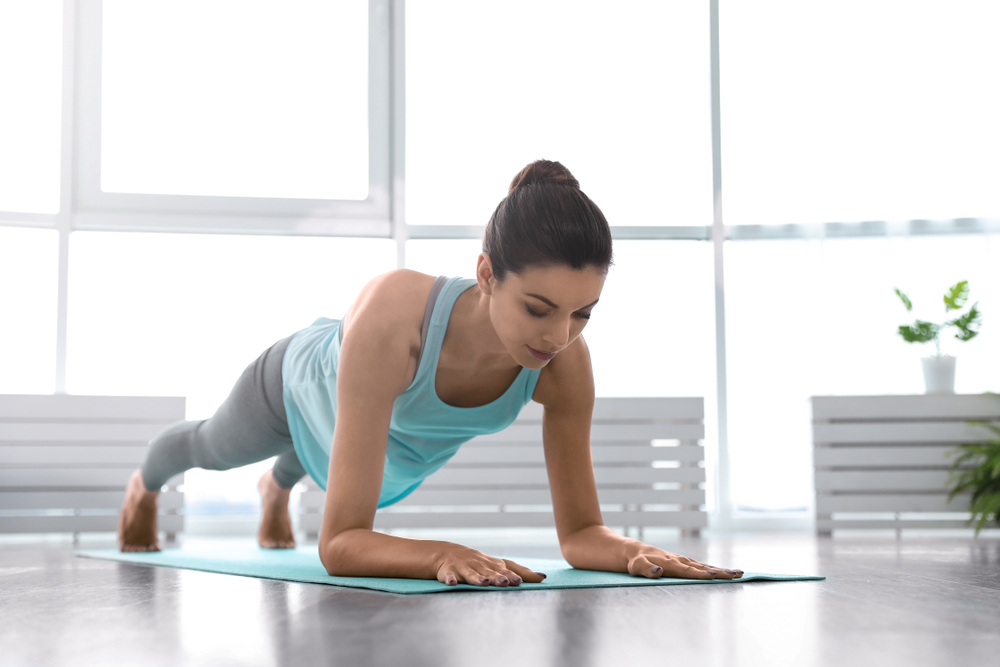
- Stretches your shoulders, hamstrings, calves, and arches
- Strengthens your arms, legs, and core
- Calms your brain and helps relieve stress and mild depression
Vasisthasana – Side Plank Pose
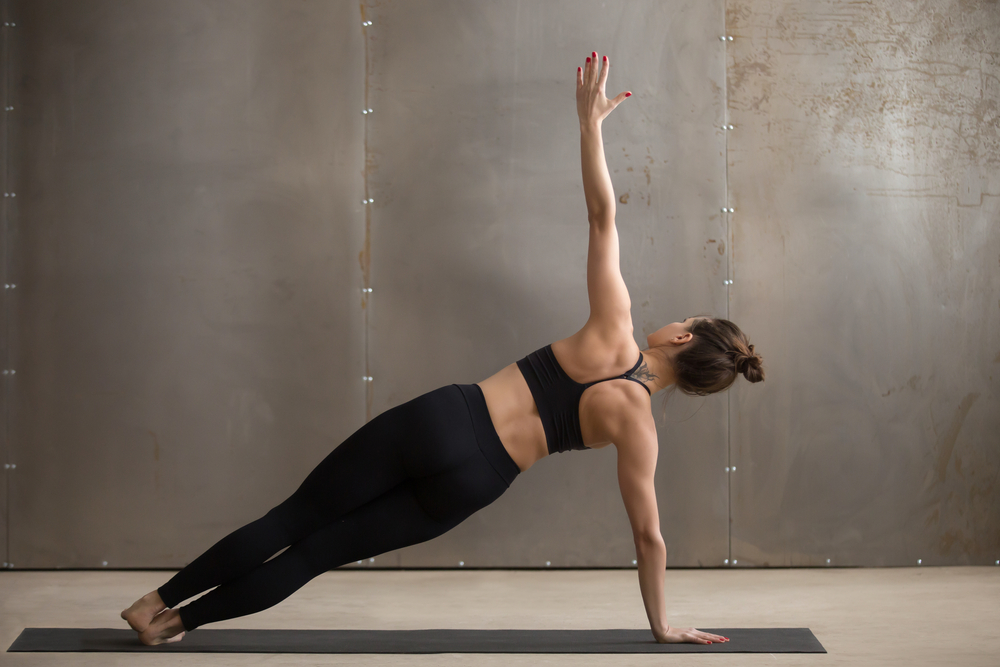
- Strengthens your arms, belly, and legs
- Stretches and strengthens your wrists
- Stretches the backs of your legs
Camatkarasana – Wild Thing Pose
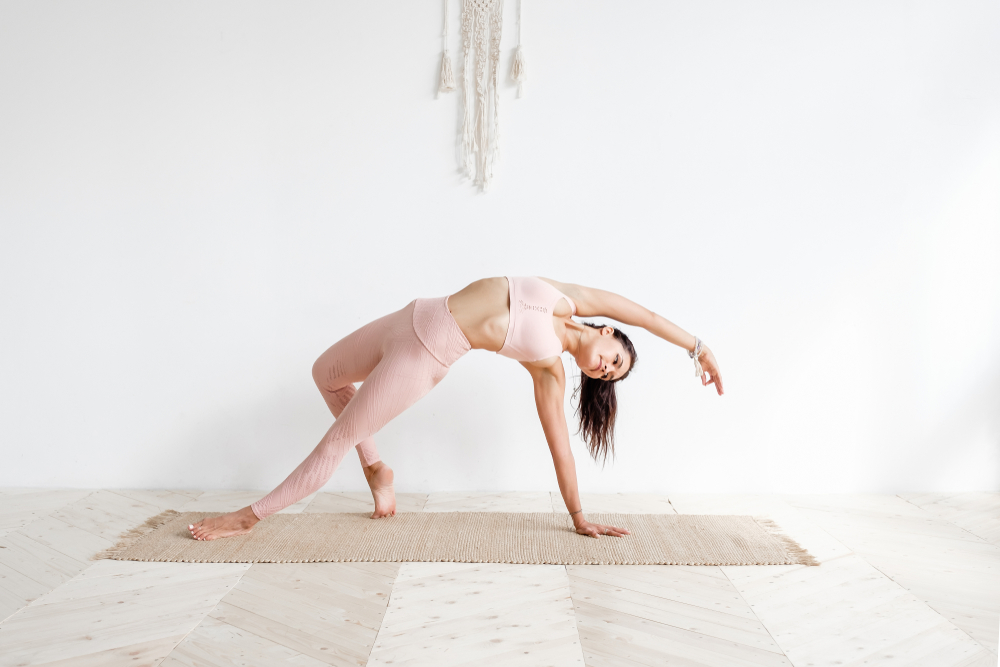
- Opens up your chest, lungs, and shoulders
- Opens up the front of your legs and hip flexors
- Builds strength in your shoulders and upper back
If you feel comfortable with these, try these next Intermediate Arm Balance Poses to strengthen and expand your practice.
Remember to keep your movement gradual over time so your body can adjust to these varying positions accordingly.
Setu Bandhasana – Bridge Pose
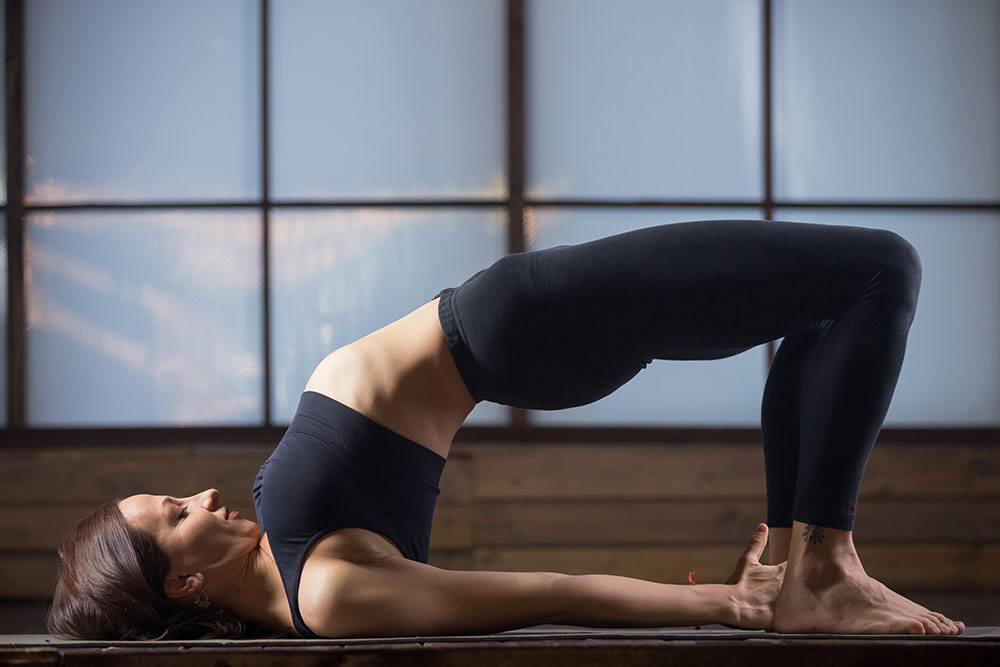
- Strengthens your neck and shoulders
- Massages your abdominal organs and kidneys
- Tones your lower back and calves
Bhujangasana – Cobra Pose
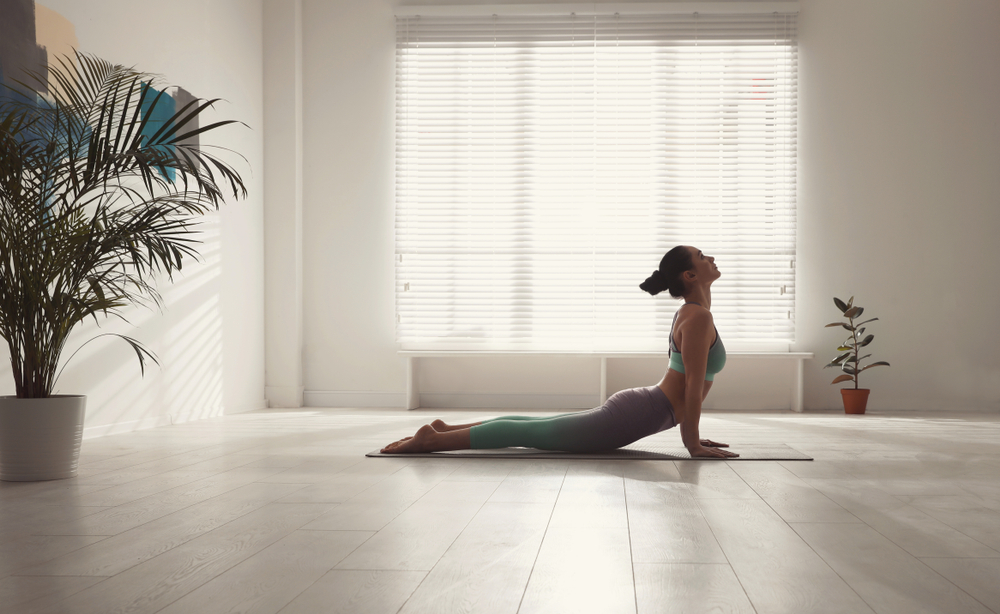
- Improves your focus and retention
- Enhances your cardiovascular capacity
- Tones your abdomen and lower back
Bakasana / Kakasana – Crane / Crow Pose
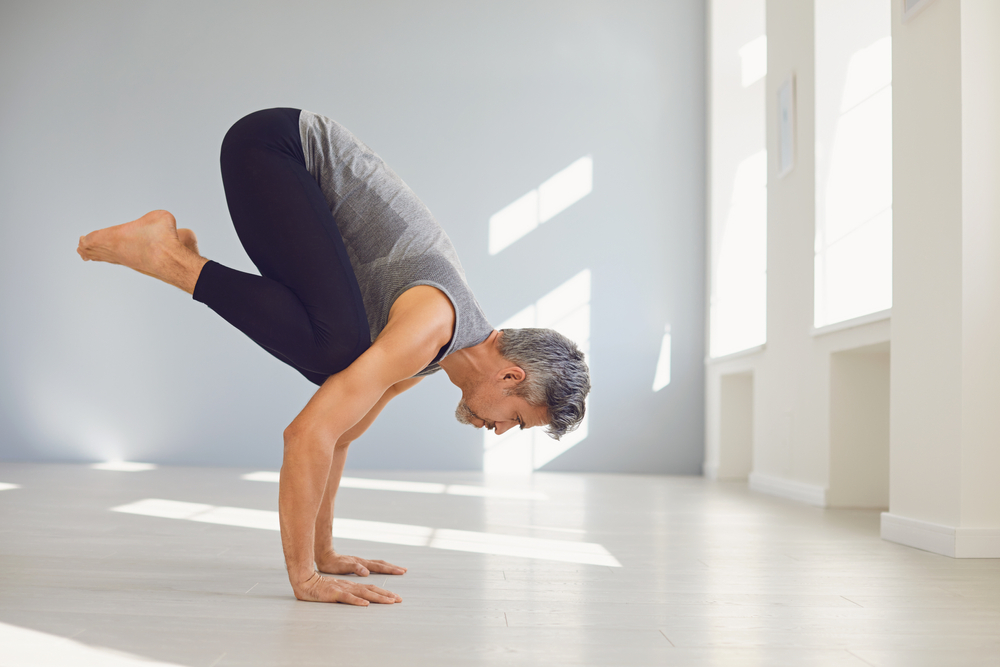
- Enhances your arm and shoulder strength
- Great posture for your spine and neck
- Improves your digestion and balances your hormones
Ardha Dhanurasana – Half Bow Pose
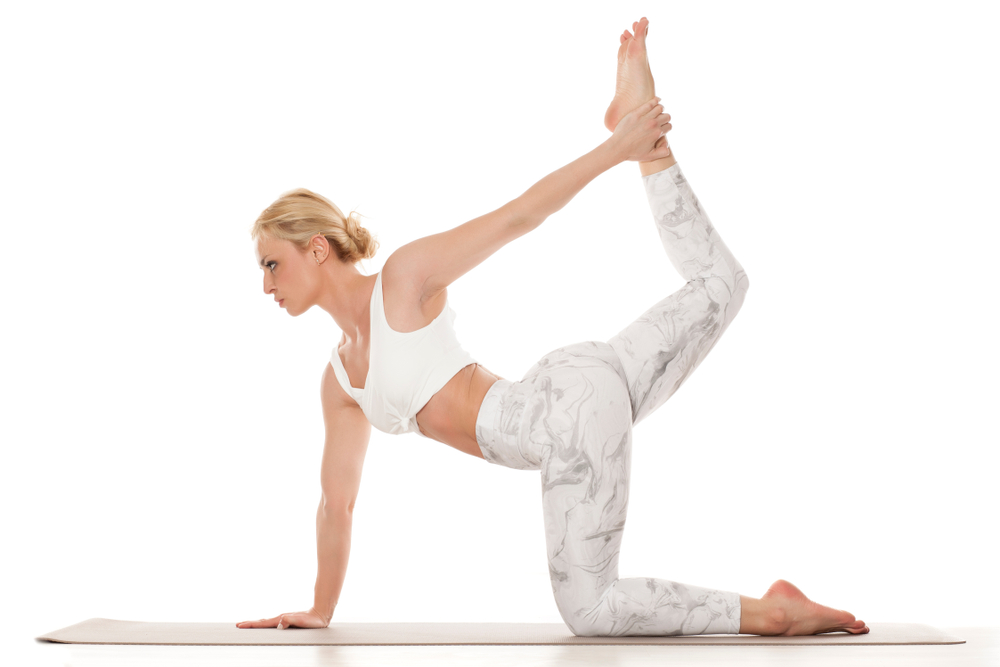
- Improves your balance and strengthens your limbs
- Increases your overall joint health
- Deeply stretches your abdomen and thighs
Ashtanga Namaskara – Knee-Chest-Chin Pose
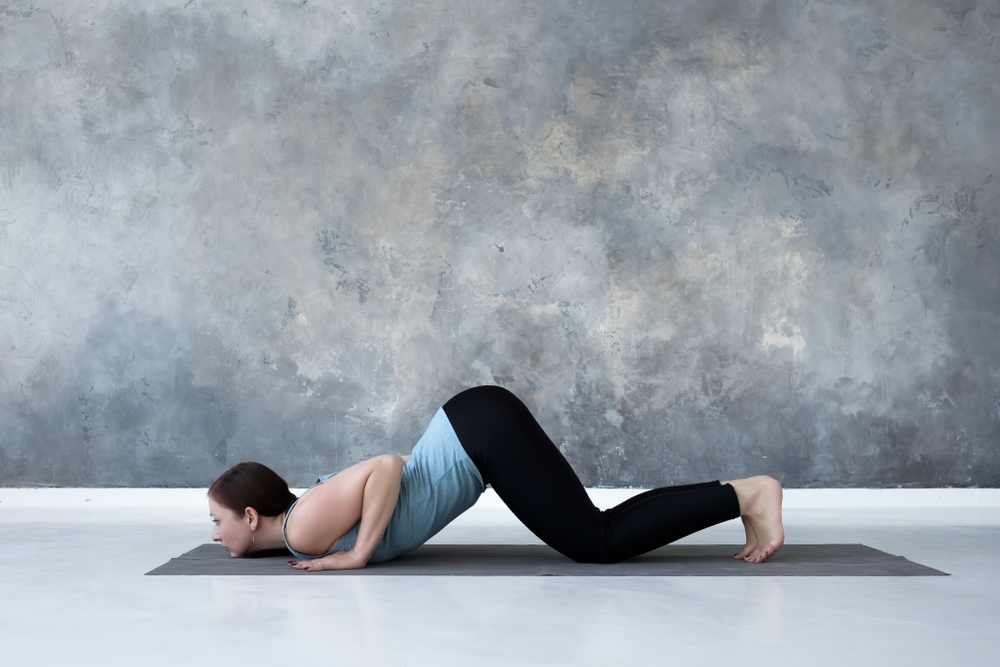
- Beneficial posture for back pain
- Strengthens your whole body
- Stimulates your abdominal and reproductive organs
Uttana Pristhasana – Lizard Pose
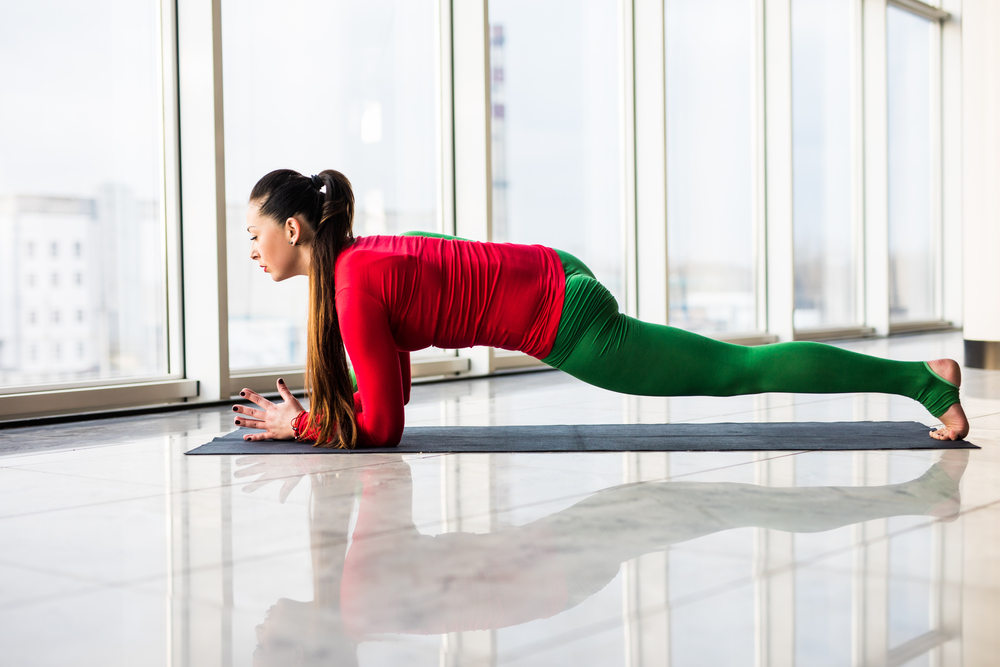
- Stretches your shoulders, hips and groin
- Shapes your thighs and calves
- Good pose for flat feet and sciatica
Eka Pada Setuasana – One Legged Bridge Pose
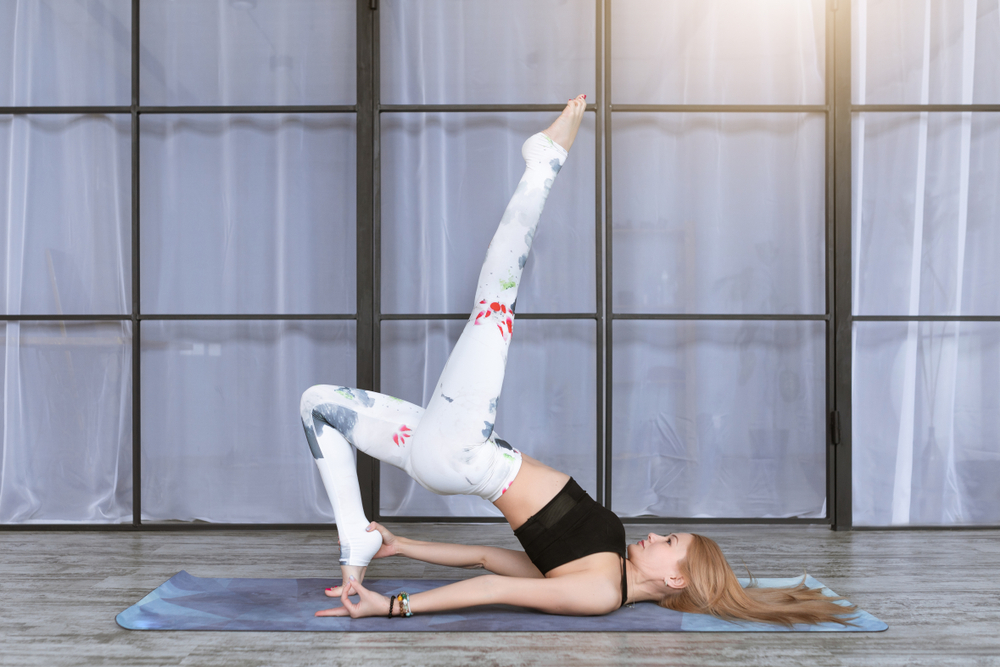
- Strengthens your back, ankles and shoulders
- Great stretch for your abdomen and quadriceps
- Beneficial posture for your urinary system function
Eka Pada Svanasana – One Legged Dog / Downward Dog (Split) Pose
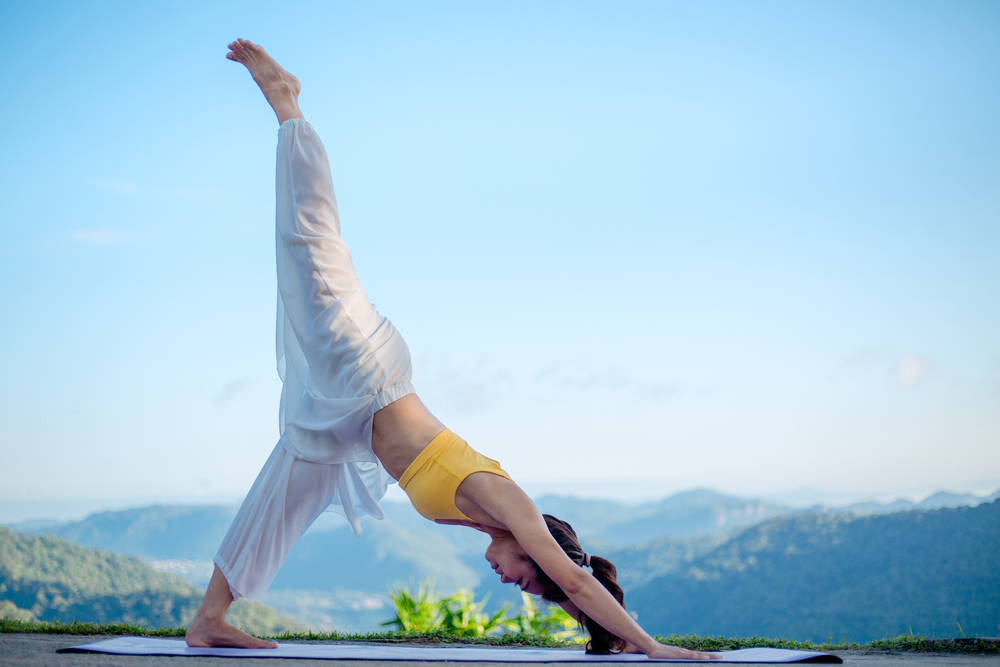
- Enhances your hamstring flexibility and hip flexion
- Stretches your Achilles’ tendons and groin
- Improves your overall digestion and balance
Halasana – Plow Pose
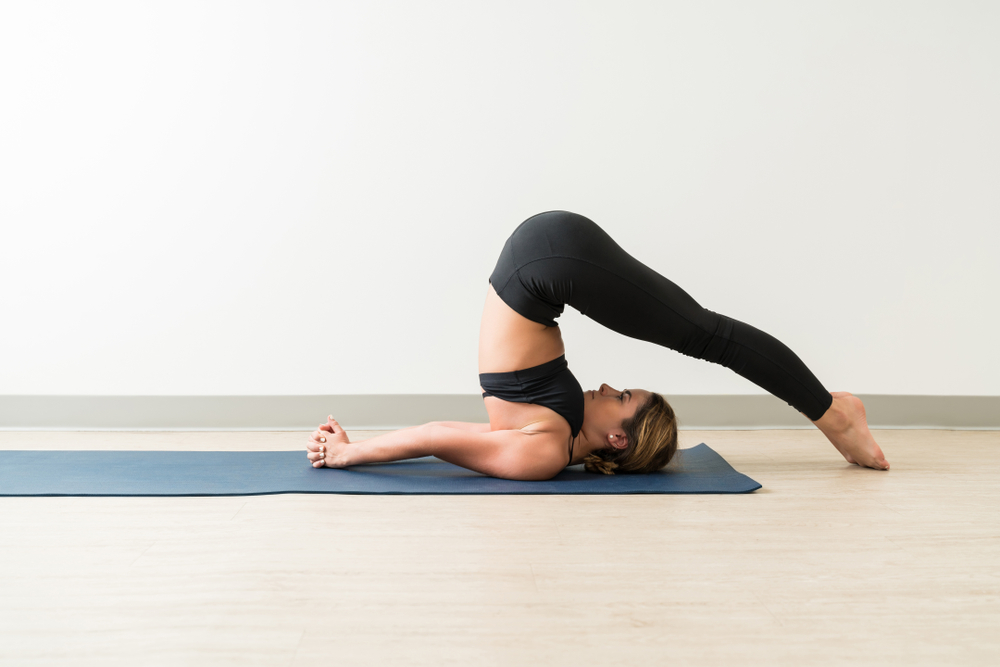
- Deeply stretches your back
- Strengthens your shoulders and neck
- Tones your abdomen and helps get relief from obesity
Tolasana – Scale Pose
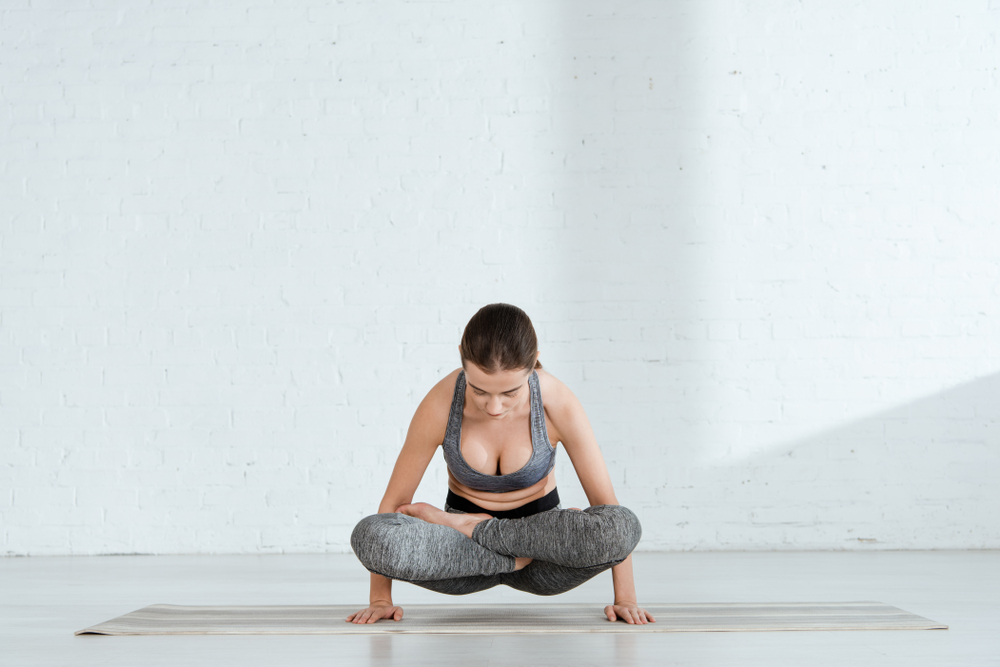
- Strengthens your arms, shoulders, and chest
- Great pose for enhancing your balance and handgrip
- Improves overall concentration
Vrschikasana – Scorpion Pose
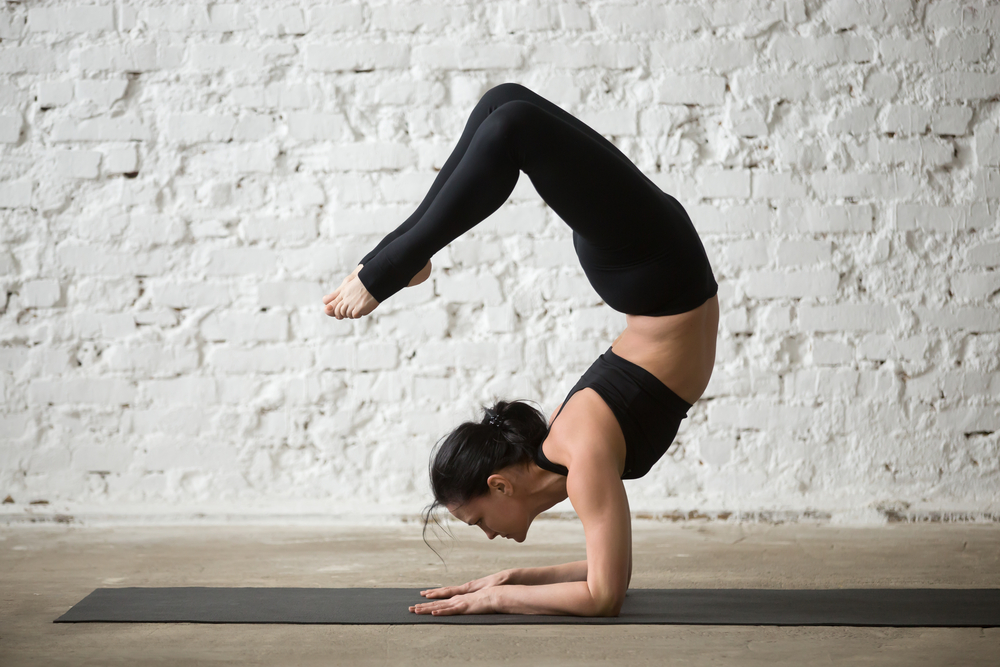
- Strengthens your arms and shoulders
- Great posture for flexibility and back pain
- Improves your mental focus
Parsva Bakasana – Side Crane Pose
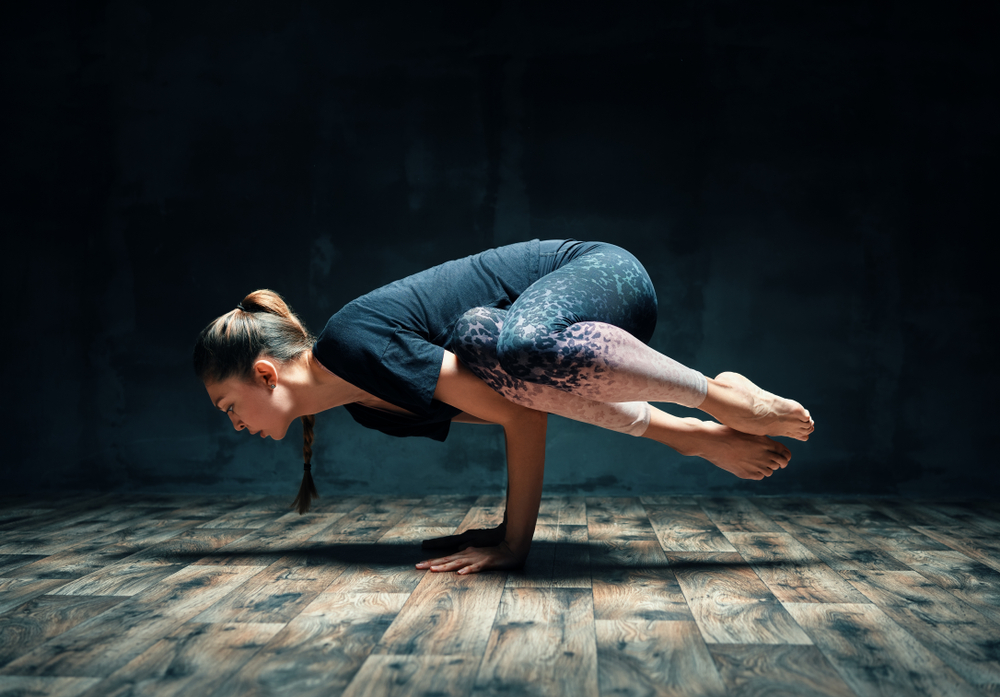
- Strengthens your arms, shoulders, and wrists
- Tones your back and abdomen
- Improves your focus and balance
Dwi Pada Viparita Dandasana – Upward Facing Two-Foot Staff Pose
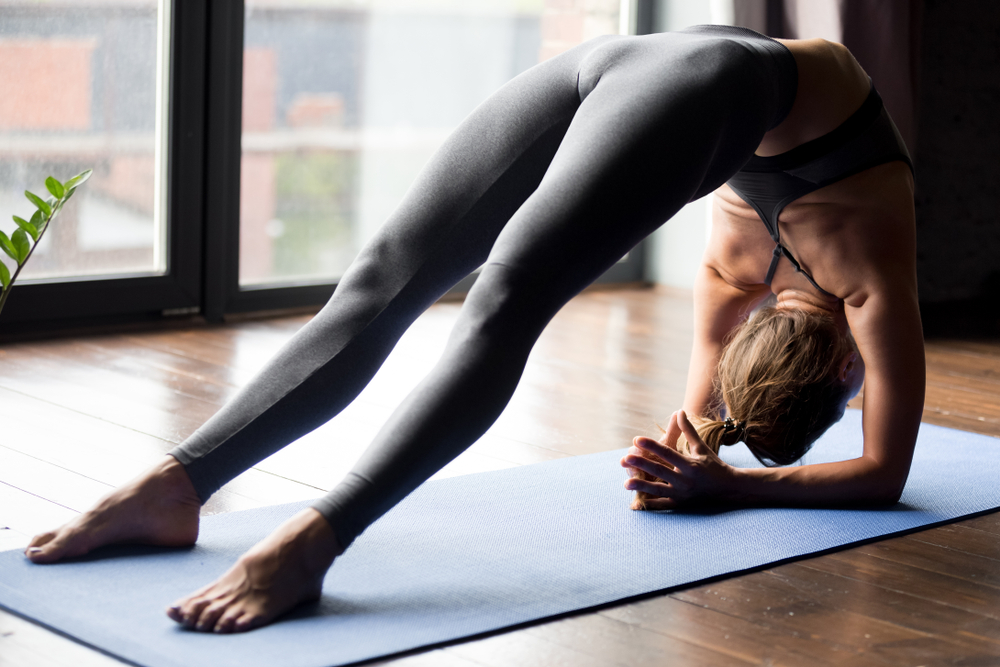
- Deeply stretches your thighs, abdomen, and chest
- Great posture for athletes
- Makes your body more flexible and agile
Purvottasana – Upward Plank Pose
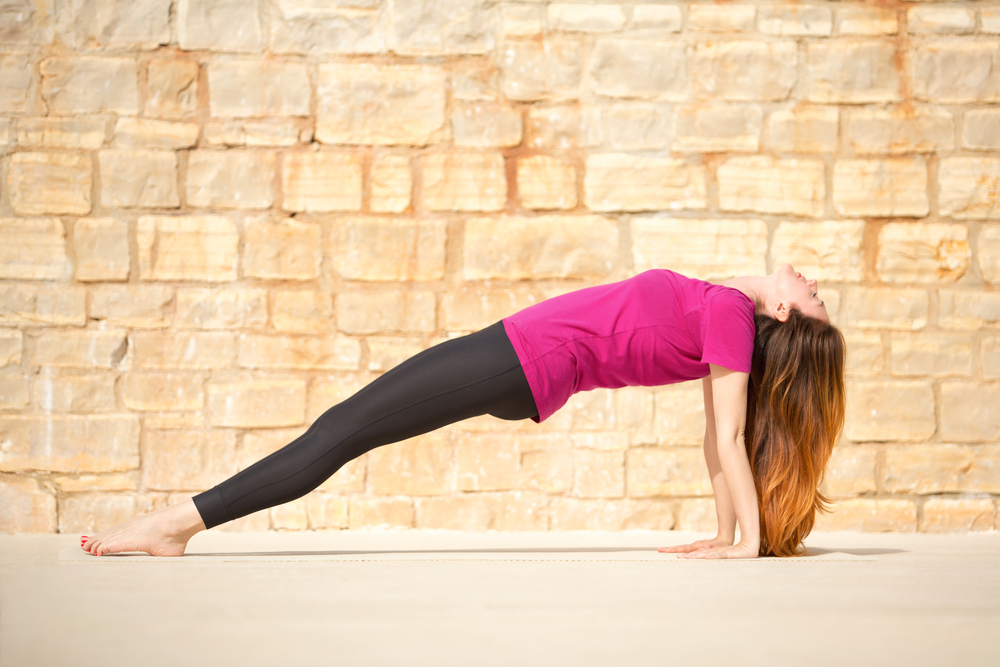
- Strengthens your arms and chest muscles
- Stretches your ankles and knees
- Tones your lower back
Urdhva Mukha Svanasana – Upward-Facing Dog Pose
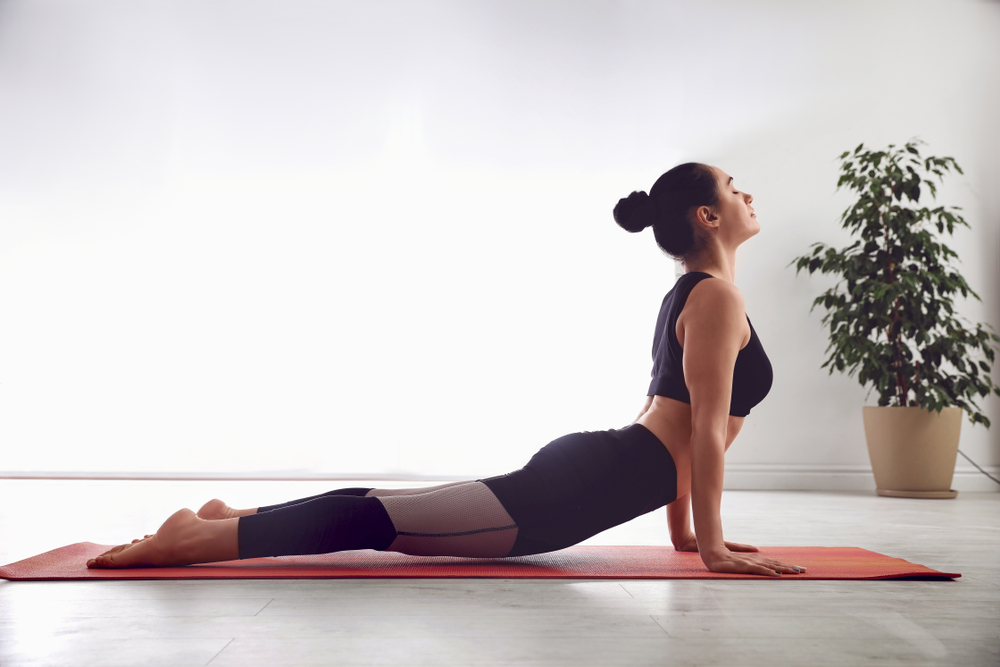
- Helpful pose for thyroid issues
- Tones your back, thighs, and calves
- Strengthens your shoulders and arms
Chakrasana – Wheel Pose
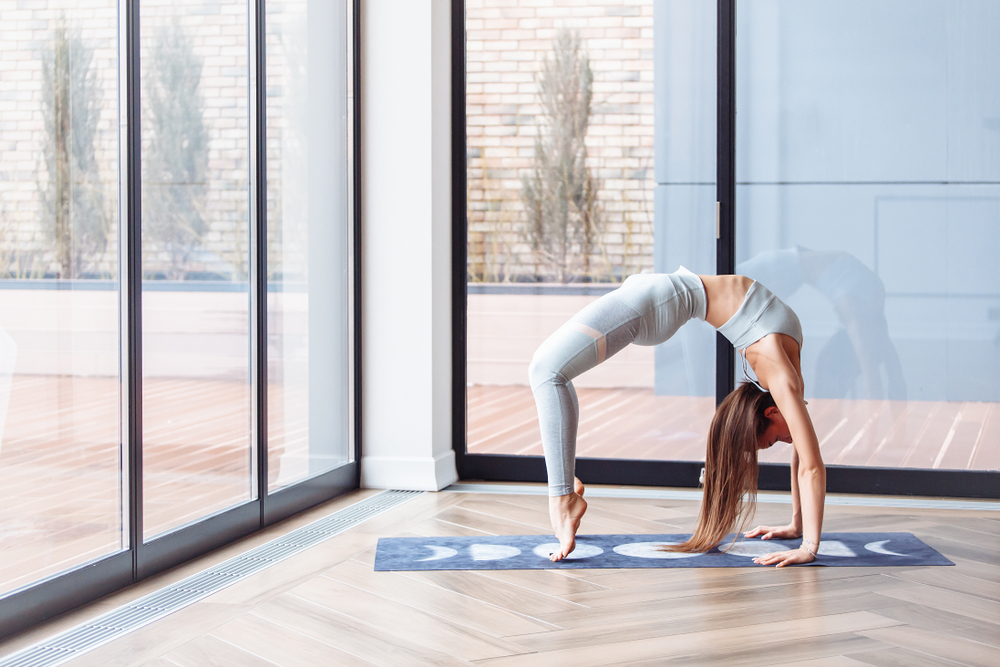
- Induces feelings of happiness and relieves anger and frustration
- Great posture for your digestive, urinary, and reproductive system
- Strengthens your arms and legs
Eka Hasta Bhujasana – Elephant’s Trunk Pose
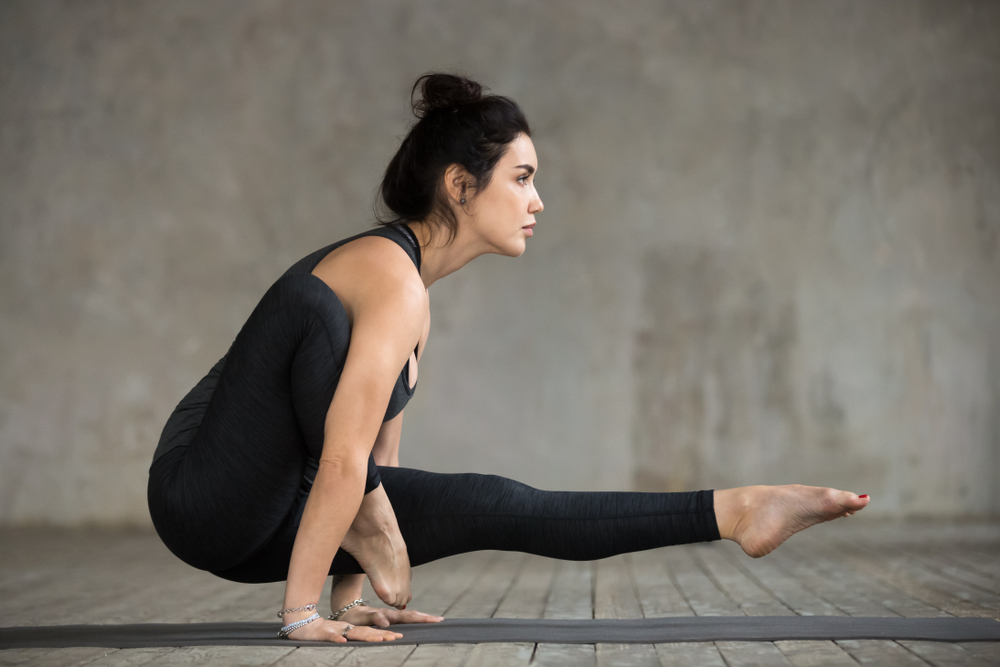
- Strengthens your arms and legs
- Focuses your mind
- Great posture for developing core strength
Bhujapidasana – Arm Pressure Pose
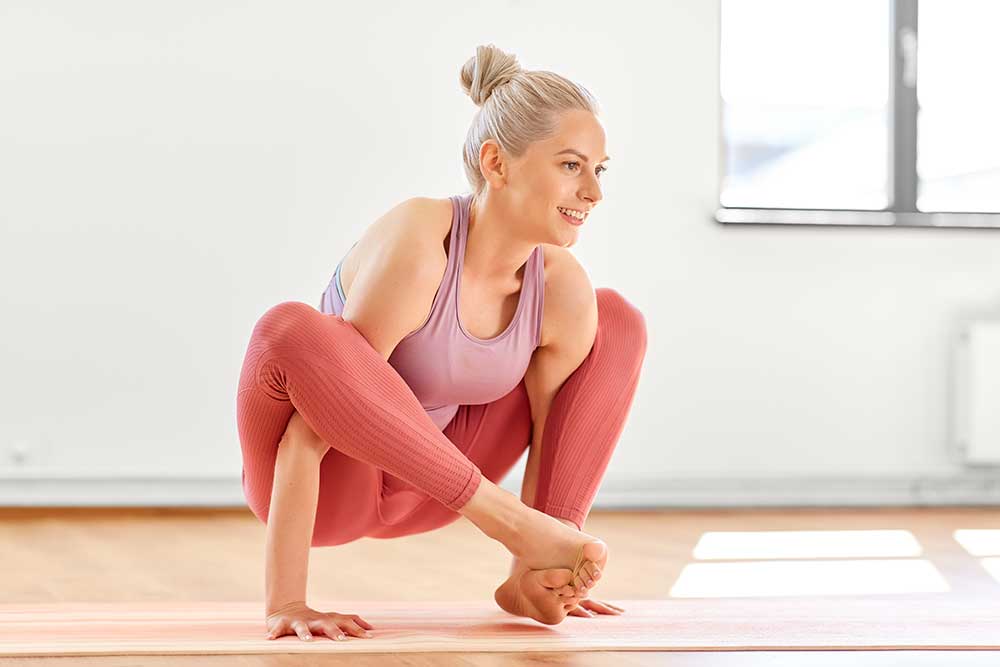
- Strengthens your arms, shoulders, and chest
- Great pose for enhancing your balance and handgrip
- Improves your overall concentration
Wow! If you’ve made it this far, you’re ready to tackle these Advanced Arm Balance Poses!
As with any practice, remember to listen to your body’s needs and engage in restorative poses afterward to allow your body to relax back into its initial condition.
You do not want to push past your body’s edge. Come right up to the edge and back off a little bit.
Vajra Kapotasana – Dove Pose
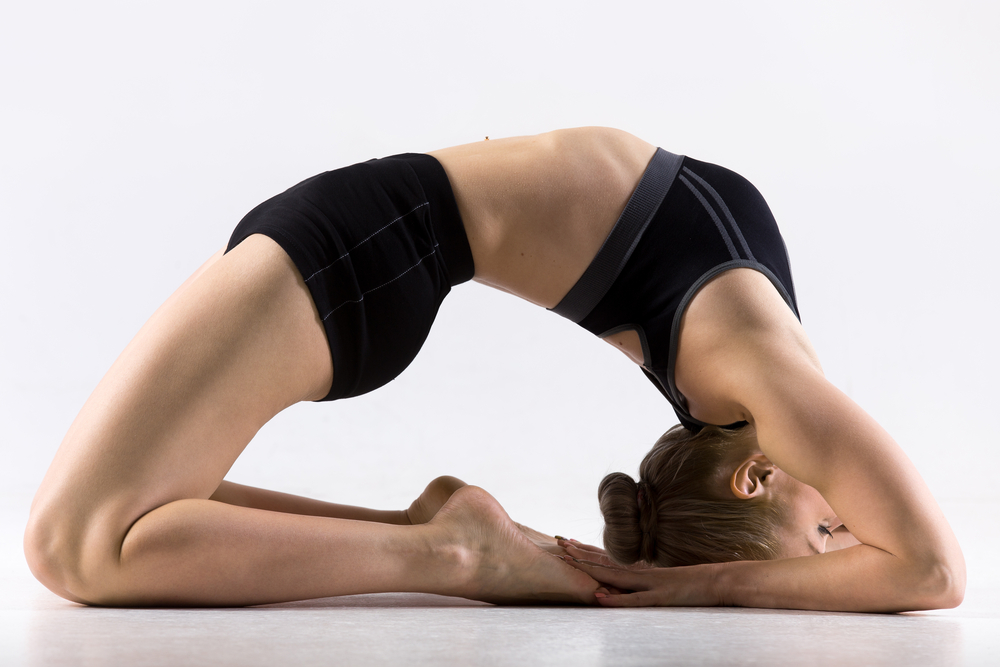
- Increases blood circulation in your spine and head
- Strengthens your shoulders and knees
- Stretches your quadriceps and chest muscles
Pinch Mayurasana – Feathered Peacock Pose
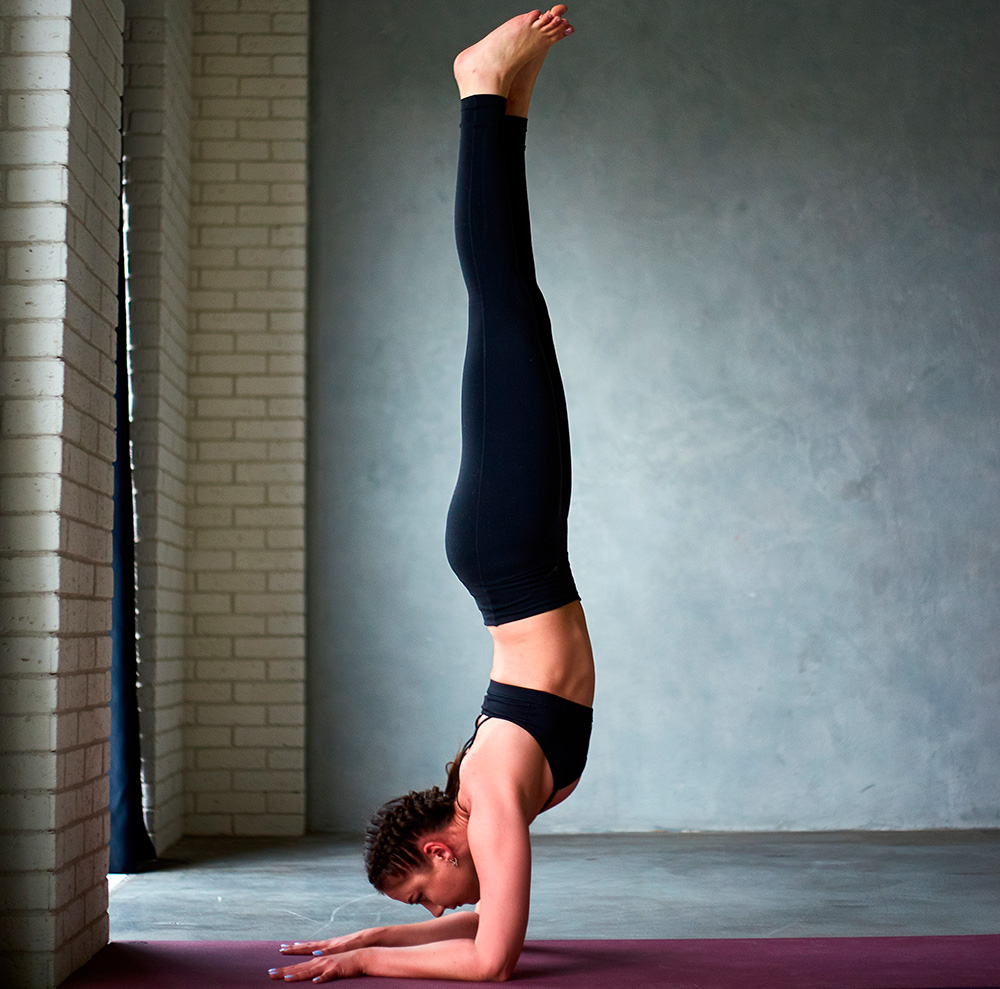
- Strengthens your arms, shoulders, and chest
- Tones your back and buttocks
- Great posture for anxiety and stress
Tittibhasana – Firefly Pose
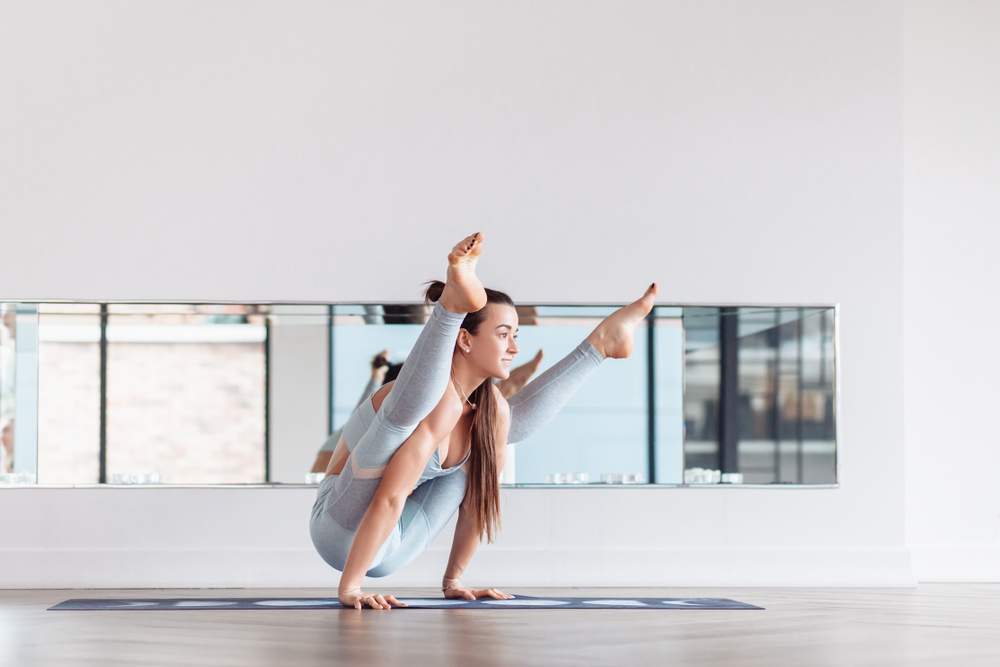
- Improves your wrist strength and handgrip
- Tones the back of your thighs and abdomen
- Enhances your balance and focus
Ardha Baddha Padmottanasana – Half Bound Lotus Standing Pose
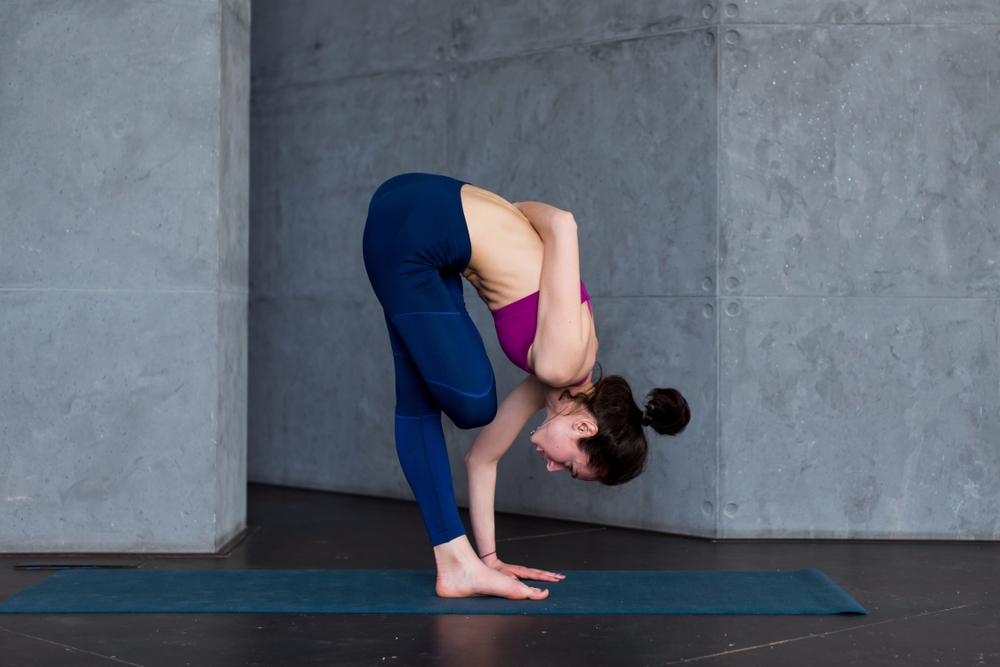
- Great stretch for your Achilles’ tendon and hamstrings
- Beneficial posture for hormonal imbalances
- Strengthens your arms and legs
Eka Pada Sirsasana – One Legged Headstand Pose
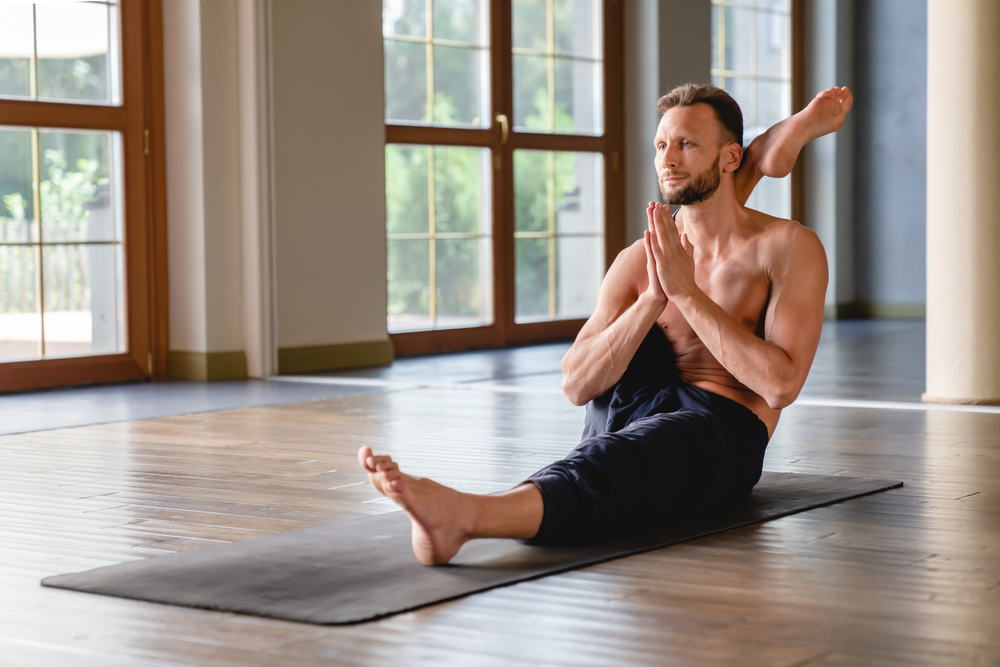
- Improves your balance and focus
- Strengthens your arms, shoulders, and ankles
- Tones your back, hips, and calves
Mayurasana – Peacock Pose
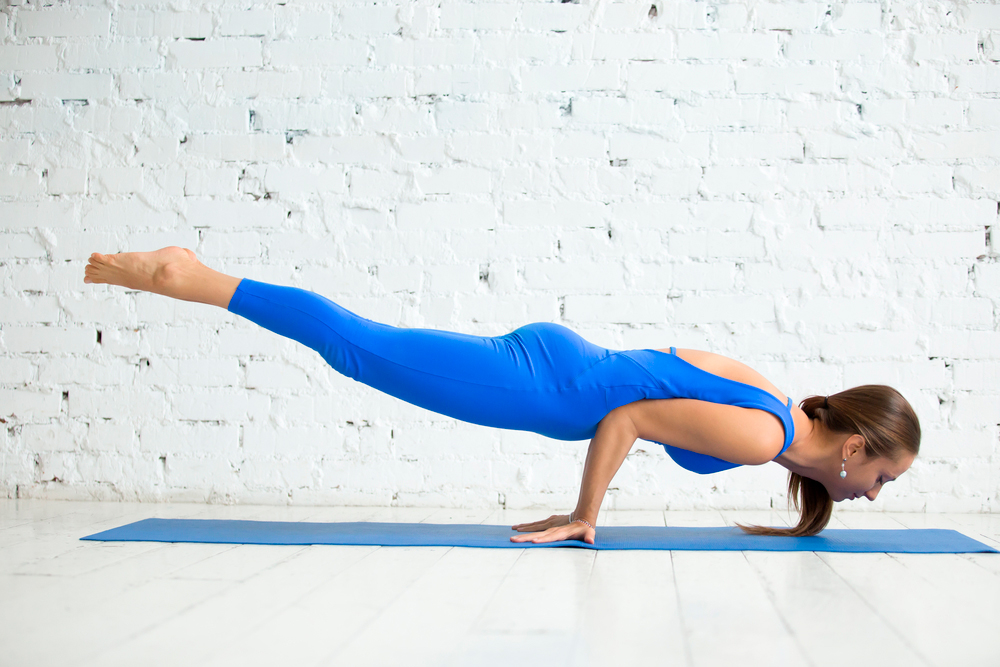
- Good for working on your focus
- Strengthens and tones your arms and upper back
- Tones your lower body and back
Niralamba Sarvangasana – Unsupported Shoulder Stand Pose
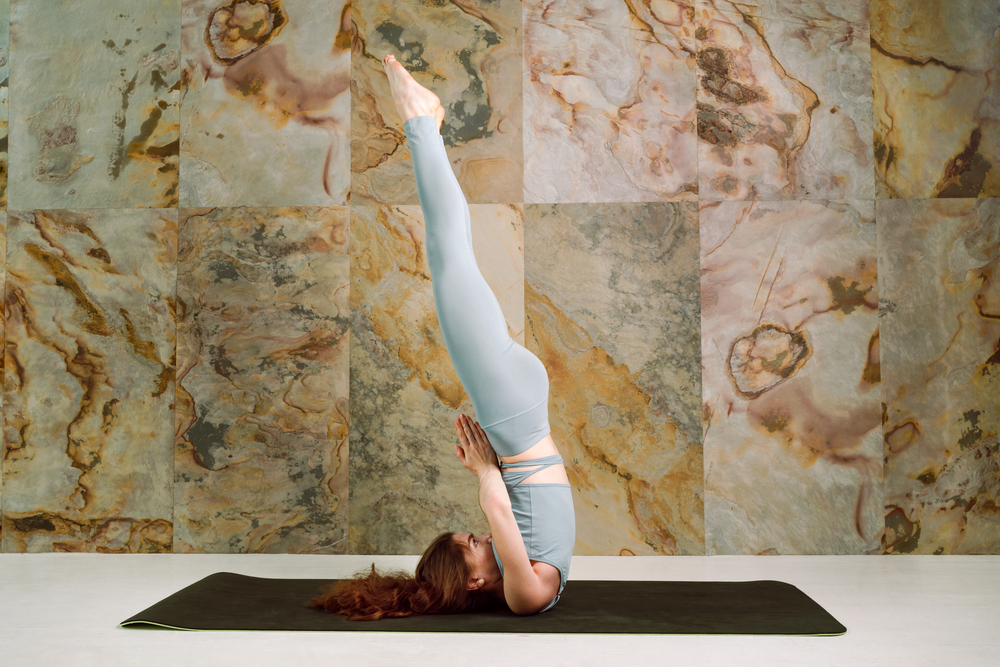
- Strengthens your shoulders and neck
- Improves your balance and mental focus
- Provides relief from stress and anxiety
Astavakrasana – Eight Angle Pose
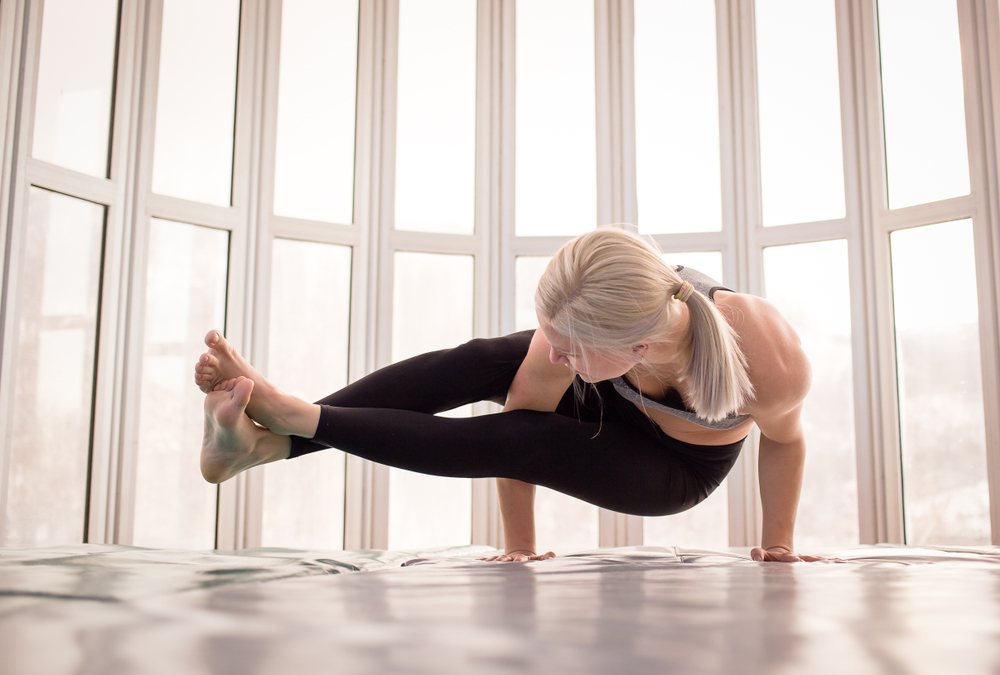
- Works on your balance and alignment
- Strengthens your palms and wrists
- Stretches your side body
Eka Pada Galavasana – Flying Pigeon Pose
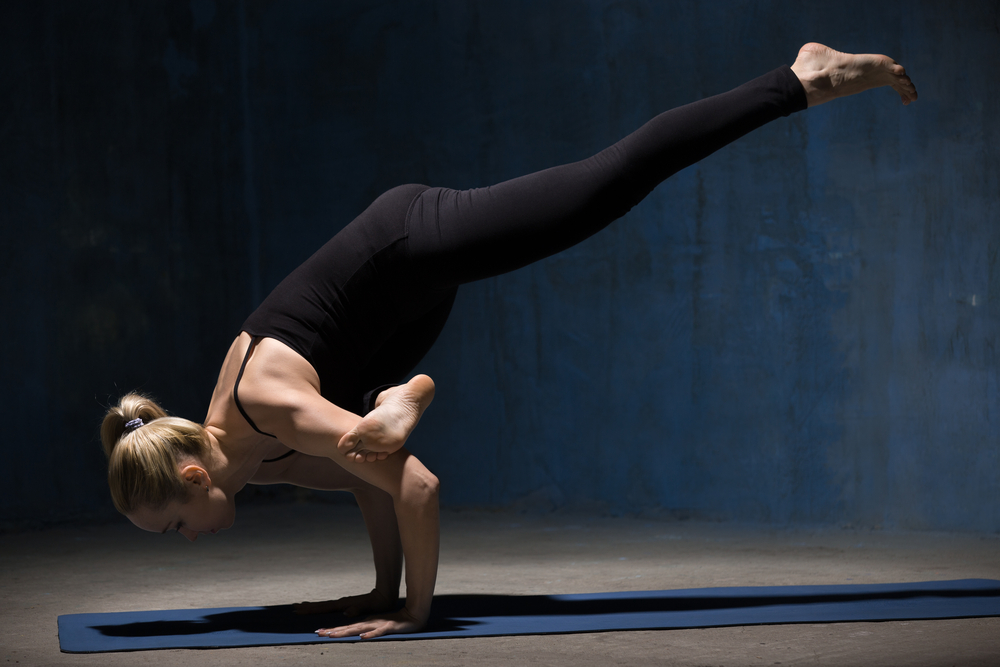
- Strengthens your upper arms and biceps
- Stretches your legs and groin
- Improves your overall mental focus and balance
Maksikanagasana – Dragonfly Pose
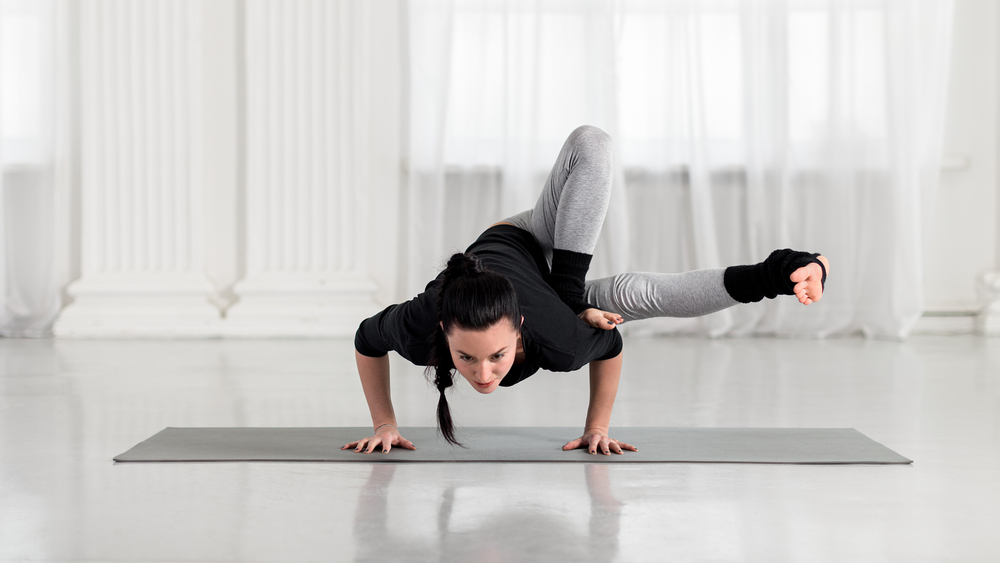
- Strengthens your arms and legs
- Stretches your side body and groin
- Improves your overall balance and agility
Final Tips for Yoga Arm Balances
With arm balances, it is important to remember that it is a process.
You are training your body to develop its strength over time so gradual progressions towards more advanced postures is the way to go.
Always remember to listen to your body and take the appropriate modifications. When attempting these poses, it is easy to strain or tear a muscle if we do not keep an awareness of our body’s needs.
While arm balances can seem like a cool trick or talent, they are perhaps among the poses that require the most amount of patience.
Most of the postures above have noted that its benefits are not only physical but encourage mental rejuvenation and relief from anxiety and depression.
This is because Yoga Arm Balances are meant to shift our perspective as a whole.
While we rely on our legs to ground us into the earth and carry us throughout our day, our arms are not always at the forefront of our minds within our practice.
Stretching our arms from side to side and using them as props to help lift us up is common. But relying on our arms to carry our entire body is a whole new challenge that opens us up to different parts of ourselves.
Because of this, arm balances are not something to jump right into. Even within the poses, it is important to maintain gradual movement.
We are working on accessing very delicate parts of the body that require our attention and compassion.
In this way, arm balances offer an insightful passage within our yoga practice. They ask us to delve into our psyche and recognize what it is that we fear by attempting these new postures.
As we come to recognize these insights within ourselves, our practice will open up over time and strengthen the muscles we require to embody new perspectives and change.
What's Your Reaction?
As a trained yoga professional and Ayurvedic practitioner, Donna goes far beyond just writing about holistic concepts. With your health and wellness in mind, she happily provides an abundance of thoughtful and well-written information.






